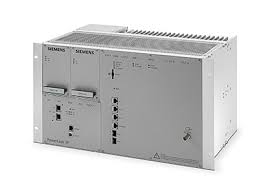
Siemens’s PowerLink IP
Siemens launches PowerLink IP, a new power line carrier (PLC) system for digital high-voltage substations.
This brand new PLC system uses the high-voltage lines between the substations as a channel by overlaying a modulated carrier frequency on the frequency of the transmission voltage in the overhead lines.
State-of-the-art, digital substations generate ever-increasing volumes of data that are used to ensure reliable network operation.
With PowerLink IP, power grid operators can enjoy the benefits of digitalization for Ethernet/IP communication via overhead lines.
Siemens provides proven PLC technology for this purpose – technology which meets the demand for more bandwidth and ensures that the constantly growing volumes of data in high-voltage substations can be used for efficient grid operation.
Traditional power line carrier systems for high-voltage lines typically use bandwidths of up to 32 kHz, offering a data transmission rate of up to 320 kilobits per second (kbps).
In contrast, PowerLink IP uses a much broader frequency band of up to 256 kHz, which allows a data rate of up to 2,5 megabit per second (Mbps) of bidirectional transmission. It can replace a number of traditional PLC systems.
In traditional high-voltage substations, data that has to be transmitted is generated only by the grid control and remote control technology.
That limits data communication needs to low bit rates for the transmission of protection signals, control center commands, current measurements and voice signals.
To be able to meet current and future demands by power grid operators for reliable network operation, continuous monitoring of the entire grid and reliable forecasting methods are a basic precondition.
In digital high-voltage substations, components and devices like sensors and actuators, remote control units based on IEC 104 and 61850, phase angle measuring units, fault recorders and power quality recorders all provide information, thus generating increasing volumes of data.
Furthermore voice over IP technology and video surveillance systems require transmission rates that are higher than traditional communication technologies of today’s substations can offer.
In addition, central data analysis and other service applications need additional bandwidth for wide-area communication networks (WAN).
These new applications and devices require a broadband communication infrastructure based on Internet Protocol (IP) and Ethernet transmission technology, within the high-voltage substation in the local communication network (LAN), and in the WAN between substations, to enable them to meet the new requirements that also increasingly include data security.
Siemens designed its new PLC system for two main types of applications: as a primary communication connection between state-of-the-art, digital high-voltage substations with no existing fiber-optic link, and as a back-up communication system for an existing installed fiber-optic cable link.
PowerLink IP can also be used in the process of converting a traditional high-voltage substation into a digital station as it is possible to integrate existing components into the new PLC system via a gateway or router.
A traditional PLC system and PowerLink IP can be operated seamlessly side by side.
PowerLink IP uses a packet-based architecture optimized by Siemens developers to enable it to meet the communication demands of the latest devices in substations.
That also reduces maintenance costs. The integrated Siemens SWT 3000 protection signal transmission system identifies and isolates faults in high-voltage networks.
This is fitted with binary input/output and GOOSE interfaces (IEC 61850).
Thus PowerLink IP is ready for future software applications and will remain further a trendsetter in state-of-the-art power line carrier technology.




